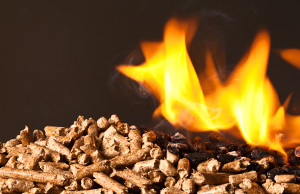 It all began during The Great Depression when a lumber mill in Northern Idaho developed a way to recycle wood byproducts. They did this by compressing them into logs that were about 13 inches long and 4 inches in diameter. These logs burned much cleaner, hotter, and longer than traditional firewood.
It all began during The Great Depression when a lumber mill in Northern Idaho developed a way to recycle wood byproducts. They did this by compressing them into logs that were about 13 inches long and 4 inches in diameter. These logs burned much cleaner, hotter, and longer than traditional firewood.
Wood-burning boxes, or stoves that burn scraps of wood or sawdust, have been around for a very long time. As wood for wood-burning stoves became less and less available for home heating, alternative fuel sources began to be sought after. The first home-size pellet stove became available in the 1980s. The purpose of the pellet stove was to use renewable and recycled fuel.
For those homeowners that can get wood down the street in the forests that are close to home, a wood stove will always be their best choice for heating. For everyone else who has to buy their fuel, pellets are less expensive than buying cords of wood.
The pellets that were to be used in pellet stoves started out being made of a combination of sawdust, wood byproducts, and wood chips. They were much smaller than the logs of the 1930s and look quite a bit like rabbit food. The biomass fuels that are used in the pellet stoves of today can be wood pellets, corn kernels, nutshells, small wood chips, waste paper pellets, grass pellets, hulled wheat, and cherry pits. Not all pellet stoves can burn all of these fuels so if you want to burn a certain fuel, we recommend that you purchase a pellet stove that can burn that specific fuel.
Pellet stoves in RI come either free-standing or as inserts. The free-standing type can be installed just about anywhere as long as they can be vented to an outside wall. They do not require a flue or chimney of any kind. The pellet stove inserts can be installed into an existing fireplace and a surround can be added to cover the space left between the outside of the stove and inside wall of the fireplace.

